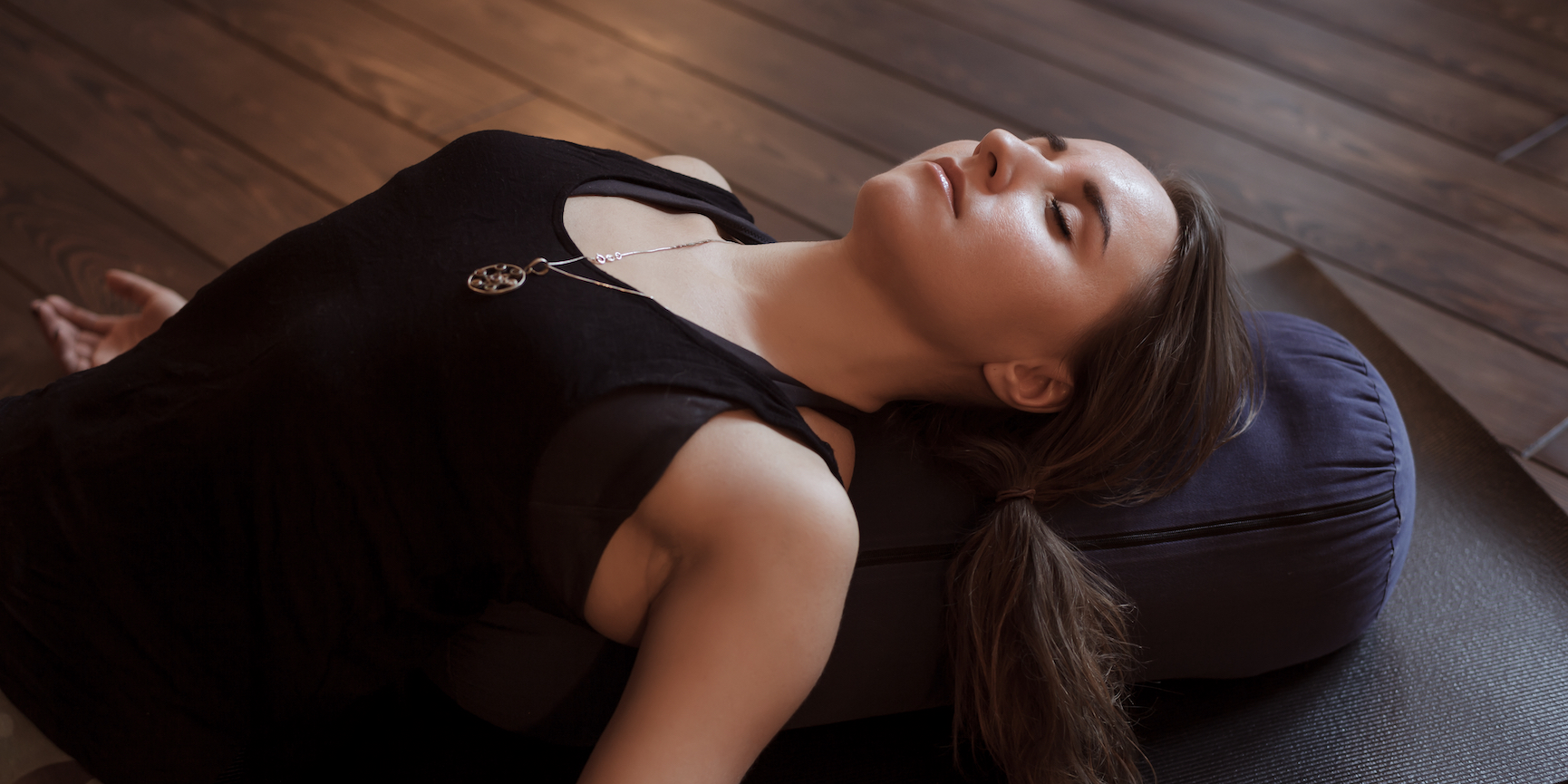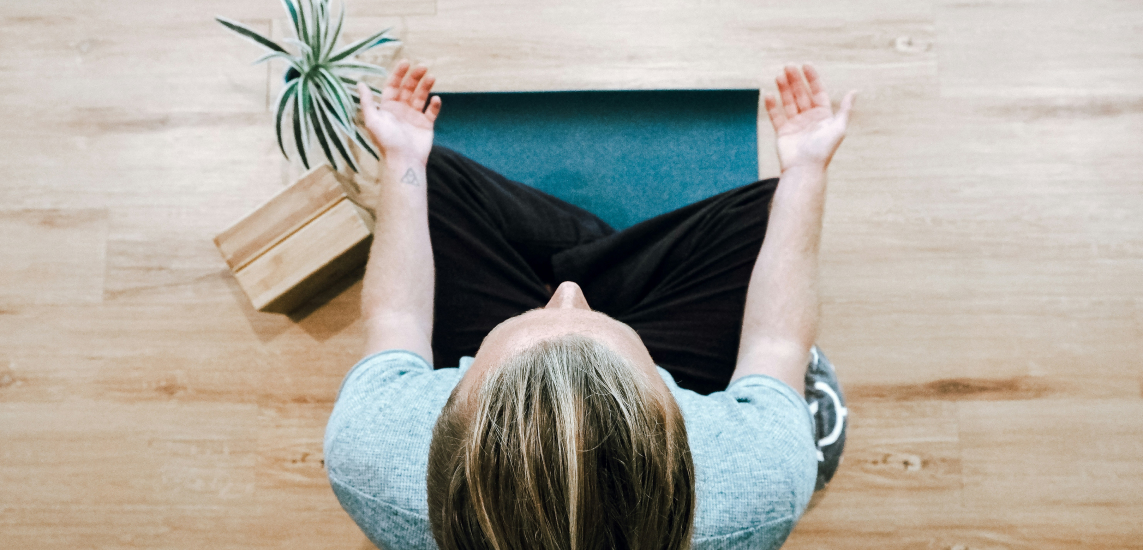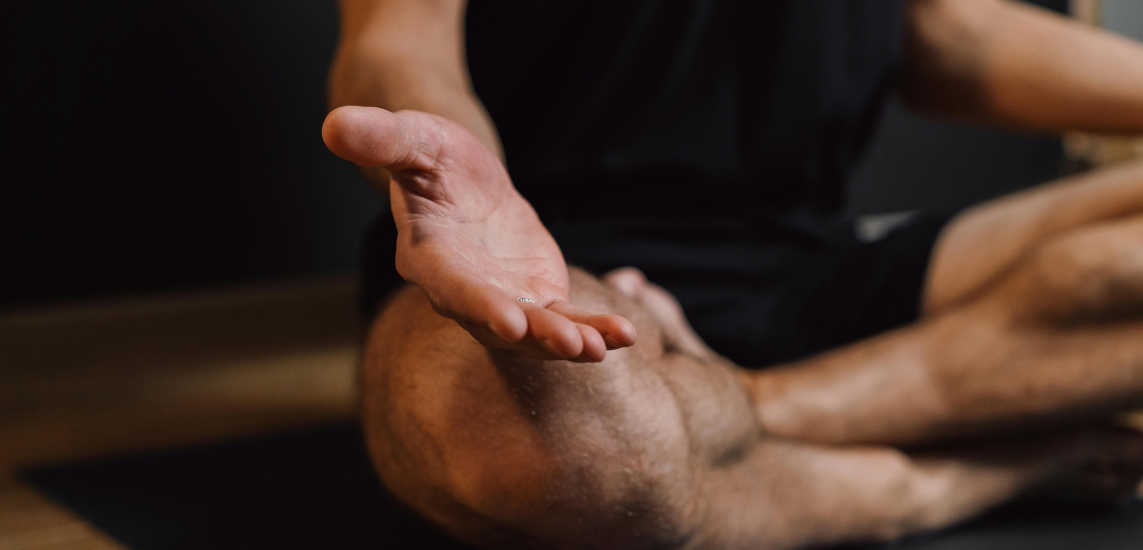Ever felt intimidated by traditional meditation poses? The good news is, there’s no strict rule on how to meditate. Whether sitting or lying down, what matters is finding a comfortable position that suits you. This article debunks the myth that meditation demands specific postures and highlights the benefits of meditation.
Key takeaways:
- Creating the right environment and adopting mindful breathing can deeply enhance your practice.
- Insight Timer offers a wide range of guided meditations perfect for lying down, from body scans to yoga nidra, and guides you through how to meditate.
- Break down how sleep meditation promotes a better night’s rest.
- Embrace meditation as a personal journey, finding the posture that best suits your needs.
Feel refreshed now: Try this relaxing mindfulness practice specifically created for lying down.
Can you meditate lying down?
Absolutely! Let’s clear up a big myth about how to meditate right now: you don’t need to sit in a special way to do it “right.”
Thinking you have to sit a certain way can make meditation feel out of reach for some, especially if sitting on the floor just isn’t your thing.
The truth is, that meditation is super flexible and welcoming to everyone.
Loads of research show that it doesn’t matter if you’re in a lying down position, a sitting position, leaning back, a reclining position or even walking — what counts is where your mind is at, not how your body is positioned.
Studies confirm meditation’s capacity to alleviate anxiety and stress under various conditions. Similarly, findings reveal the broad health benefits associated with mindfulness, including reduced blood pressure and reduced blood pressure and anxiety, underscoring that posture is not a limiting factor.
How to meditate lying down
Meditating in a supine position, lying down, can be as simple as finding a comfortable position to lay back and enjoy your preferred mindfulness meditation.
There are, however, a few specific practices that incorporate or lend themselves well to laying down during mediation. Yoga nidra, for example, is like a special nap where you lie down and listen to someone guide you through relaxing practices. It helps you feel super calm and peaceful, like you’re almost asleep but still awake. It’s a cool way to relax your body and mind and feel really refreshed afterward.
Prior to meditation, yoga and yoga poses like savasana, where you lie on your back, can improve the effects of your meditation. Some Insight Timer teachers, like Wendy Beckerman have created expert 4.9-star guided lying down yoga that is accessible to everyone.
Elevate your meditation: Learn how yoga and meditation practices support each other.
What are the benefits of meditation lying down?
Lying down meditation positions (supine positions) aren’t just cozy alternatives to the sitting position — they’re a pathway to deep relaxation and improved focus.
For those with mobility issues, back pain, lower back pain, or anyone who finds sitting for long periods uncomfortable, lying down meditation is a welcoming option. It ensures that the benefits of mindfulness are available to everyone.
Research highlights how mindfulness meditation techniques, especially when practiced lying down, support:
- better sleep
- deep relaxation
- deep sleep
Learn more: Meditation while lying down can complement your personal and spiritual growth journey by easing the discomfort of meditation.

How to stay awake during lying down meditation?
Lying down meditation challenges us to stay awake and mindful, not to slip into sleep. This is actually one of the key aspects that make yoga nidra effective!
Though sleep meditation can be valuable, it can be advantageous to:
- Separate meditation sessions from lying down meditation and sleep meditation.
- Keep your eyes slightly open or let in some light to help you stay awake.
- To combat drowsiness, choose times to meditate when you’re most alert.
Let’s go a bit deeper into laying down mindfulness practices here. Yoga nidra is designed for lying down meditation. It helps maintain conscious awareness through relaxation stages. It encourages:
- deep relaxation
- letting go
- loving-kindness
- overall wellness
Enhance your meditation experience by choosing the right time, setting clear intentions, and exploring practices like yoga nidra that align with staying alert and relaxed.
Go deeper into conscious awareness by trying one of our yoga nidra meditations, optimizing your practice for alert relaxation.
Optimize your lying-down meditation practice by creating conditions that enhance your experience, making each session more effective and enjoyable. Here are some key areas to focus on:
Create an environment ideal for you
Setting and ambience play a crucial role in your meditation practice. Don’t be afraid to experiment with your setting to uncover what you enjoy most and what supports your relaxation and focus simultaneously. There are a few tips that can help you get started.
- Choose a quiet, comfortable spot where you won’t be disturbed.
- Consider dimming the lights or using candles to create a calming atmosphere.
- Play soft background music or natural sounds can also help set the mood for relaxation and introspection.
Position matters — find what works for you
Finding the right lying-down posture is essential for a successful meditation session. Lie on your back with a small pillow under your head and perhaps another under your knees to support your lower back. Make sure your arms are relaxed at your sides, palms facing up. This corpse pose helps keep your body aligned and comfortable, allowing you to focus on your meditation without physical distractions, enhancing wellness.

Incorporate mindful breathing techniques
Breathing is at the heart of meditation, serving as a bridge between the body and mind. Focus on your breath, taking slow, deep breaths through your nose. Feel each breath as it enters and exits your body, and let this rhythmic pattern guide you into deeper relaxation. This diaphragmatic breathing is crucial and the diaphragm is an important body part to be mindful of in mindful breathing.
Engage in more breathwork approaches with these additional Insight Timer resources.
Practice guided meditations
Guided meditations can be particularly helpful for lying-down meditation, especially for beginners or those seeking structured sessions. Insight Timer offers a wide range of guided lying down meditations. These sessions can provide direction, help you maintain focus, and enrich your meditation experience with expert guidance through relaxation and mindfulness techniques.
Not sure if lying down is right for you? Check out these 5 tips for healthy seated meditation.
Recommended meditation techniques for lying down practice
If you’re looking for deep relaxation and to meditate lying down, Insight Timer has great guided meditations to help you get started. Here are a few types that are perfect for this comfortable lying down position:
- Body scan meditation: This kind of meditation helps you pay attention to different parts of your body. It’s like a mental journey that helps you relax in each area, one by one. On Insight Timer, you can find guides to body scan meditation that gently guide you through this process, like this top-rated guided body scan.
- Mindful breathing: Focusing on deep breaths is a simple but powerful way to meditate. Our guided breathing sessions help you notice your breathing in a relaxing way, which is great for lying down. Here is a quick, 10-minute mindful breathing meditation from Insight Timer teacher, Anu Gupta.
- Guided relaxation: If you’re looking to unwind, try guided relaxation. These meditations use calm voices and sometimes soft music to help you reach deep repose.
- Yoga nidra: This is a special kind of meditation where you get super relaxed, almost like you’re asleep but still awake. Our yoga nidra sessions are created by teachers from all over the world and are perfect for doing in bed or on your yoga mat.
- Belly (Diaphragmatic) Breathing Dr. Darragh O'Shea 8:15
- Belly Breathing For Anxiety Mary Maddux 12:03
- Belly Breathing For Releasing Stress Christina Mattison 8:42
- Diaphragmatic Breathing Cait Luke 3:19
Conclusion
We want to encourage you to give lying-down meditation a try with an open heart and mind.
Remember, meditation is a deeply personal journey, and there’s no one-size-fits-all approach.
The best posture for meditation is the one that feels right for you, where you can relax and connect with yourself on a deeper level.
Lying down meditation might just be the change you need to deepen your practice or to make meditation accessible if you’ve found sitting uncomfortable. It’s all about exploring different paths to mindfulness and discovering what brings you peace and clarity.
FAQs about lying down meditation
Is meditating lying down effective?
Yes, meditating while lying down can be effective, especially for those who find sitting uncomfortable. It’s a valid position known as savasana, or corpse pose in yoga, promoting relaxation and mindfulness.
What position should I be in to meditate?
You can meditate in various positions, including sitting, lying down, standing, or walking. The key is to choose a posture where you can remain comfortable and focused.
Is it OK to do meditation in bed?
Absolutely. Meditating on your bed can be a comfortable and convenient way to practice, especially for relaxation before sleep or if sitting is physically challenging.
Can Buddhists meditate lying down?
Yes, Buddhists can meditate lying down. This posture is less common but recognized, especially in traditions emphasizing adaptability and comfort in meditation practice.
Is it OK to doze off during meditation?
While the goal is to stay awake and aware, dozing off can happen, especially in a relaxed state. It indicates a need for rest; however, practicing at a more alert time might be beneficial.
Is it better to sit or lie down while meditating?
The best position varies by individual preference and physical needs. Sitting is more traditional and can help maintain alertness while lying down offers comfort and relaxation.
Why shouldn’t you meditate at night?
Meditating at night is generally fine and can improve sleep quality. However, deep meditation just before bed might be too energizing for some, disrupting sleep patterns.
Is 10 minutes of meditation equal to 4 hours of sleep?
This claim is exaggerated. While meditation is restorative and can enhance the quality of sleep, it cannot fully substitute the physical and mental restoration sleep provides.
When should you not meditate?
Avoid meditating immediately after eating heavily, without guidance during extreme emotional distress, or when it interferes with your sleep cycle.
Can you overdo meditation?
Yes, excessive meditation without proper grounding can lead to disorientation or emotional imbalance. Balance and moderation are key.
How many minutes of meditation is equal to sleep?
There’s no direct equivalence, as meditation complements rather than replaces sleep. Both serve different restorative functions for the mind and body.
How long should you meditate?
Beginners might start with 5-10 minutes daily, gradually increasing as comfortable. Even short sessions can be beneficial, with longer sessions deepening the practice.
What is lying down meditation called?
Lying down meditation is often referred to as “Savasana” or corpse pose in yoga, focusing on relaxation and mindfulness while lying flat.
Can you meditate with your eyes open?
Yes, meditating with eyes open is a practice in some traditions, focusing on a specific point or maintaining a soft gaze to anchor awareness.
Is it better to meditate in the morning or night?
Both times have benefits: mornings can set a positive tone for the day, while evenings can help unwind and process the day’s events. Choose based on personal routine and preference.
References
Krishnakumar, D., Hamblin, M. R., & Lakshmanan, S. (2015). Meditation and Yoga can Modulate Brain Mechanisms that affect Behavior and Anxiety-A Modern Scientific Perspective. Ancient Science, 2(1), 13–19. https://doi.org/10.14259/as.v2i1.171
Mk, B., Jw, D., Jc, H., Mg, J., H, N., E, C.-F., R, G., B, B.-K., Ba, M., Gl, F., Ja, D., H, B., Rm, Z., & Ta, L. (2018, May 1). Specific Transcriptome Changes Associated With Blood Pressure Reduction in Hypertensive Patients After Relaxation Response Training. Journal of Alternative and Complementary Medicine (New York, N.Y.). https://pubmed.ncbi.nlm.nih.gov/29616846/
Rusch, H. L., Rosario, M., Levison, L. M., Olivera, A., Livingston, W. S., Wu, T., & Gill, J. M. (2019). The effect of mindfulness meditation on sleep quality: a systematic review and meta-analysis of randomized controlled trials. Annals of the New York Academy of Sciences, 1445(1), 5–16. https://doi.org/10.1111/nyas.13996



-1.jpg)




